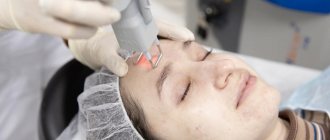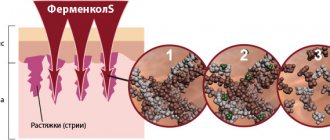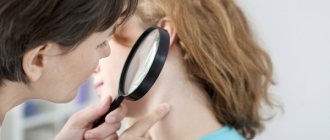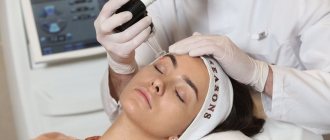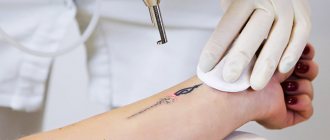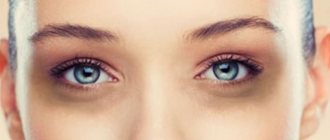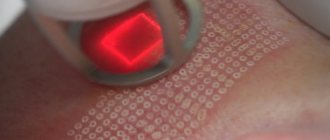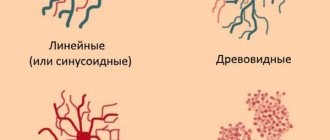Atrophic scars post-acne are not only one of the most common reasons for turning to cosmetologists, but also one of the most difficult therapeutic tasks.
The pathogenesis of their formation is complex.
It is thought to be associated with inflammatory mediators and enzymatic degradation of collagen fibers in the dermis as well as the hypodermis. Research continues to date into why some acne patients experience scarring and others do not, as the severity of acne does not always correlate with the frequency or extent of scarring. A hereditary or genetic predisposition to their formation is assumed 1. In any case, post-acne scars often lead to psycho-emotional discomfort of patients and a significant decrease in quality of life.
The clinical picture of atrophic scars is quite typical - thin, reminiscent of tissue paper and have a transparent surface through which the vessels are visible. As a result of fibrosis, all skin appendages disappear, the relief is completely smoothed out. Flat atrophic small scars occur mainly on the face. Large scars, up to several centimeters in size, are noted in the shoulder girdle area.
Histological examination reveals a flat, thin epidermis with voids. Within the dermis, a large number of dilated lymphatic and venous vessels are found. Thin, horizontally located collagen fibers in the form of nodes and loops are clearly visible; lymphohistiocytic cells are located between these fibers. Elastic fibers are almost completely destroyed, preserved only along the periphery of the scar. The skin appendages are also completely destroyed, only sometimes remnants of hair follicles are found.
Progress of the procedure
Laser resurfacing of acne scars is performed in a clinic that has the appropriate certificates and qualified personnel. Initially, the skin on the face is cleansed with a mild gel, then treated with tonic. In case of excessive anxiety, it is possible to take light sedatives.
Since the procedure involves influencing the deep layers of the dermis, local anesthesia is administered before starting work. An anesthetic is applied to the injured area.
Laser resurfacing of acne is carried out using a special device. The essence of its work consists of several stages:
- The beam makes a microscopic hole in the skin.
- The dermis absorbs the laser, resulting in internal heating.
- When heated, moisture leaves the cells, which leads to their complete destruction.
- Tissue coagulation provokes the breakdown of old protein, elastin and collagen.
- Next, the beam destroys the connective tissue formed during the healing of previous inflammations.
- The surrounding cells activate intensive division.
It is this effect that allows you to even out the relief of the skin. One session can last from 15 to 30 minutes, depending on the scale of the problem and the sensitivity of the patient. At the end of the procedure, a soothing gel is applied to the treated area.
ELOS acne treatment - what is it?
The increasing resistance (resilience) of the skin bacterial flora to long-term systemic and local antibiotic therapy, their numerous side effects, as well as the low effectiveness of other local treatment methods have stimulated the search and use of physiotherapeutic methods, as well as the development of comprehensive treatment programs.
Physiotherapeutic treatment, either as an independent method or in combination with medications, significantly increases the protective functions of the entire body, and therefore the effectiveness of treatment.
However, often an obstacle to the implementation of high-quality correction of acne and its complications is the lack of necessary equipment in beauty salons and the high cost of a combination of procedures. In this regard, many manufacturers of cosmetology equipment began to develop and produce devices based on the principle of 2 or more in 1, that is, different types of effects with different mechanisms are combined in one device.
Principle of ELOS technology
Such technologies in many cases turned out to be not only more rational and affordable, but also more effective in terms of treatment results. The abbreviation “ELOS” (Electro-Optical Synergy) stands for electro-optical synergy, or combination.
Elos acne therapy combines light energy in the form of intense pulsed light (IPL) or laser beam with electromagnetic wave energy emitted in the radio frequency (RF) range. The summation of the therapeutic effect of each of these physical factors significantly exceeds that of each individually.
Monochromatic or broadband radiation is selectively absorbed by skin structures containing water, hemoglobin, oxyhemoglobin, beta-carotenes, melanin - hair follicles, blood vessels, connective tissue, pigment formations. The temperature in these structures increases due to the transformation of light energy into heat. In the same short period, they turn into selective conductors of electric current due to a drop in electrical resistance.
This exposure to light energy is not used for the purpose of destruction by thermolysis of cells and tissues, as in other cases of application of light technology, but to form a temperature gradient (difference) between target structures and bordering healthy tissues. This temperature difference can be further increased by superficial local cooling of the skin by 5°, which prevents it from heating up and causing a burning sensation and pain. The patient only feels warmth and a slight tingling sensation in the affected area.
The temperature of deeper structures (hair follicles, age spots, small vessels) does not change. Limited heating or thermolysis under the influence of radiation of electromagnetic waves in the radio frequency range occurs at a radiation power of up to 100 J/cm3.
The combination of the summing effects of these two physical factors makes it possible to use them with less intense energy. This significantly reduces the likelihood of a negative effect of the procedure, increases the degree of its therapeutic effect and safety.
Treatment of acne and post-acne with ELOS technology allows you to control the resistance of the skin and its temperature with each pulse of energy impact. The penetration depth of the electrical influence of the bipolar system, calculated as ½ the distance between the electrodes, is optimized thanks to the configuration of the electrodes.
The ELOS technology conditionally consists of the following stages of the procedure:
- Pre-cooling of the skin surface.
- The use of a light pulse to identify the “target” and heat it, as well as reduce electrical resistance.
- Heating the target area to the required temperatures using electromagnetic RF waves.
Mechanisms of therapeutic effect
Propionic bacteria produce protoporphyrins during their life processes. Under the influence of intense blue light with a frequency of 470-980 nm, emitted by the device’s applicator, groups of free radicals that have a detrimental effect on bacteria are separated from protoporphyrins. At the same time, RF radiation, due to thermal effects, leads to atrophy and destruction of the sebaceous glands.
Thus, with the help of ELOS technology, it is possible to eliminate or reduce the influence of two factors that play a major role in the development of acne mechanisms - acne propionbacteria and excessive sebum secretion by the sebaceous glands.
How many procedures are needed? Treatment consists of two sessions within one week. In order to obtain highly effective and long-lasting results, it is recommended to carry out maintenance procedures once a week. Their number is determined individually and averages 6-8 procedures.
Treatment of post-acne (post-inflammatory scars) is carried out using another attachment, which combines a bipolar radio frequency current source and a diode laser with a wavelength of 915 nm.
The latter is fractionated into many microbeams. Nonspecific heating of the border zone between the papillary and reticular skin layers causes an increase in the temperature of collagen fibers, as a result of which two processes develop:
- partial destruction of collagen proteins, which is a trigger for the synthesis of new fibers, that is, the processes of neocollagenesis are launched;
- increased production of collagen protein and twisting of collagen fibers lead to compression of the ducts of the sweat and sebaceous glands, which leads to a decrease in the size of skin pores and a decrease in sebum secretion.
As a result of these processes, after several sessions of ELOS therapy, the number of skin collagen fibers under the scars increases, small scars decrease and stretch, the nature of the skin surface becomes more uniform and smooth.
Fractional laser in the dermis causes only multiple local point damage, which does not require a rehabilitation period. How often to do treatment procedures for post-acne? Typically, the course of treatment consists of 3-4 sessions, which are carried out over 3-4 weeks, that is, one procedure per week.
Types of laser radiation
To remove acne scars with laser, four types of equipment with different radiations are used:
- Neodymium laser – has a fractional effect. The pulses penetrate to a depth of 4-6 mm. Allows you to treat acne and eliminate the spread of microorganisms that cause acne formation. After the procedure, you don’t have to hide from the sun. Can be used to correct any area - face, neck, décolleté, back.
- Erbium laser is a representative of traditional grinding. Helps remove scars and tattoos. Doesn't heat cells. Penetrates into deep layers, not recommended for use during periods of active sun. The device has a targeted effect. After the session, swelling and redness of the treated area is observed.
- Fraxel - has a targeted effect on cells, heating them from the inside. The surface layer is not injured, which significantly reduces the rehabilitation period. After the procedure, metabolism accelerates and natural collagen production is stimulated. Used to eliminate post-acne, vascular network, stretch marks and age spots.
- Multilaser – combines several technologies. Able to remove post-acne and existing inflammatory foci. There are no consequences after the procedure.
The doctor chooses the appropriate type of laser.
Correction
Erbium laser resurfacing of acne is a highly effective modern method. The laser “grinds down” the top layer of skin, removing dense scar tissue. The boundaries between healthy skin and treated skin are erased and leveled. In place of the damaged skin removed by the laser, new collagen fibers are formed and healthy tissue is formed.
In the acute stage (when there is acne and severe inflammation), the procedure cannot be performed. You need to wait about six months for the inflammation to completely stop and the redness to go away - otherwise there is a risk of rough scars forming.
Rehabilitation
The depth of treatment and the type of equipment used have a direct impact on the duration of recovery after laser resurfacing. Skin care is carried out at home independently.
Immediately after completion of the procedure, the cosmetologist applies a sterile bandage, which is removed only after three days. The skin is then treated with solutions and creams prescribed by the doctor. Up to 5 treatments are performed per day. As healing progresses, crusts and peeling may appear on the surface of the integument - they cannot be gotten rid of. If this is done, new scars will remain on the skin. Before each trip outside, you should use a cream with ultraviolet protection.
Post-acne removal
laser
Fotona technology allows you to even out the color and surface of the skin, smooth out scars. Laser exposure increases tissue tone and elasticity.
How the procedure goes:
By applying a certain power to the surface of the skin, restoration processes are launched and dead cells are removed. At the same time, the laser beam disinfects the skin, which prevents inflammation. During the procedure, healthy cells are not damaged. The patient does not experience pain - local anesthesia (cream) is used when necessary.
Advantages
Smart medicine for smart people
Safe, effective and natural rejuvenation
The best technologies for communicating with patients
We don't just take care of your beauty - we recharge you!
How many sessions are needed:
Acne treatment requires 2 to 4 procedures at intervals determined by the doctor. Subsequently, preventative visits to the clinic will be scheduled.
Recovery after acne treatment:
ND:YAG laser removal requires only a couple of days of recovery; skin resurfacing (fractional rejuvenation) entails a week of skin care.
During the course, it is not advisable to stay in the sun for a long time. Use sunscreen and do not take photosensitizing drugs. The doctor will tell you about other aspects of rehabilitation. The undeniable advantage of our patients is that cosmetologists are always in touch with you after the procedures. You can ask your doctor any question - via WhatsApp or by phone - and thus avoid mistakes in home care.
MIGUNOVA ANASTASIA ANDREEVNA
Cosmetologist
Initial consultation: RUB 4,500
Make an appointment with a doctor Instagram
VYATKINA IRINA SERGEEVNA
Gynecologist-endocrinologist
Initial consultation: RUB 9,500
Make an appointment with a doctor Instagram
KALININA EKATERINA ALEXANDROVNA
Cosmetologist
Initial consultation: RUB 4,500
Make an appointment with a doctor Instagram
KOZLOVA EKATERINA NIKOLAEVNA
Gynecologist-endocrinologist, oncologist
Initial consultation: RUB 6,000
Make an appointment with a doctor Instagram
Effect of laser resurfacing post-acne
Reviews of laser treatment for post-acne prove the effectiveness of the procedure. After completing the course, the skin becomes elastic, with an even tone and structure. Existing age spots and scars disappear or become less noticeable. After 6 months, you can evaluate the final result, which will last for life.
Modern hardware cosmetology allows you to solve a number of problems. Laser treatment for post-acne is an effective way to get rid of skin defects, helps eliminate even the deepest scars and scars, and is considered the most comfortable and safe. The fairly high cost of the procedure is compensated by lasting results, excellent appearance and self-confidence. Large cosmetic centers regularly hold promotions, make discounts and give pleasant bonuses to their clients.
Laser removal of post-acne. PAINLESS laser removal of post-acne using the PicoSure device.
Photos before and after laser acne removal
Reviews
Tatiana
I am happy to be among your guests at the clinic, I enjoy our communication, I am grateful for your super professionalism, for giving beauty and a sense of confidence in your professional actions, protection from “age-related changes”
